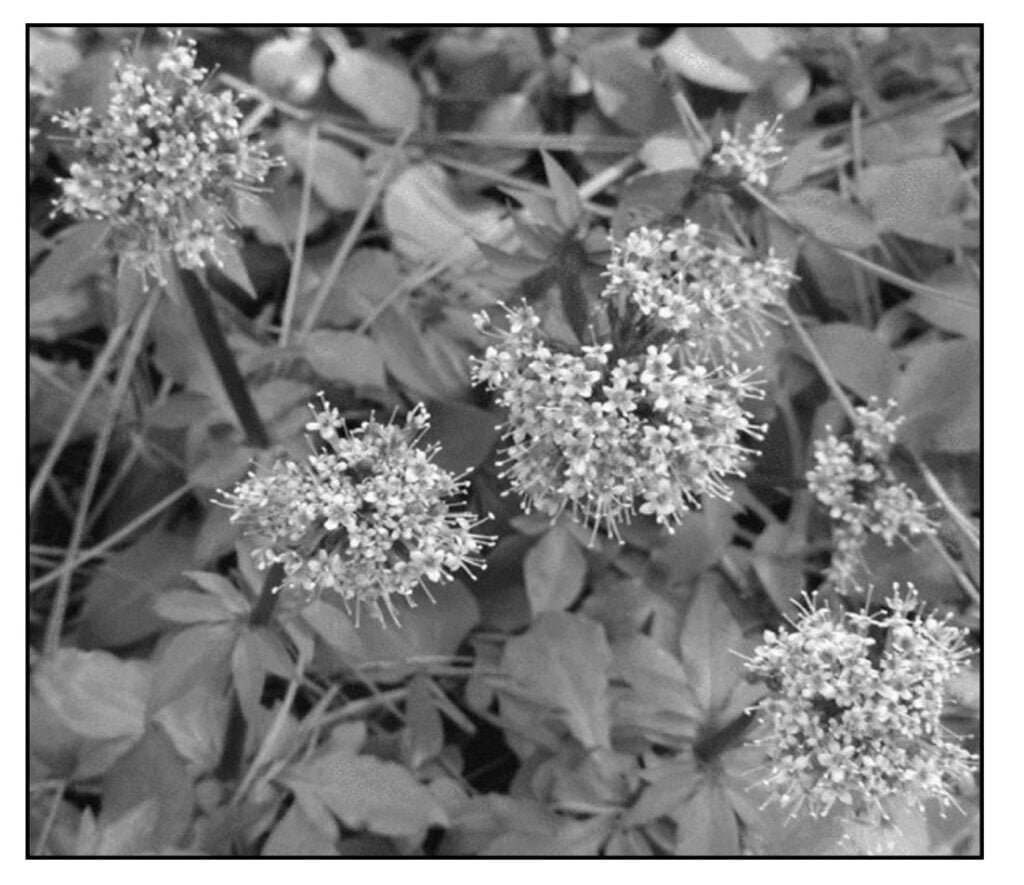
Botanical Name: Valeriana Wallichii
Family Name: Valerianaceae
Kingdom: Plantae
Division: Magnoliophyta
Class: Magnoliopsida
Order: Dipsacales
Family: Valerianaceae
Genus: Valeriana
Species: V. wallichi
Popular Names: Valerian Jatamansi, Taggar, Tagara, All-heal, Amantilla, Baldrian, Great Wild, Valerian Phu
Part Used: Rhizomes
Habitat: Temperate zone of North Western Himalayas up to an altitude of 3,000 metres.
Description
Indian valerian is an erect, perennial plant that grows to a height of 4 feet with pinnate, divided and heart-shaped leaves. Pink or white flowers are found in clusters on the leaf top. The roots are a hairy and spindly mass that is collected in autumn from two-year old plants. The rhizomes are greenish-brown in colour and hard and tough internally. The herb is cultivated in Belgium, England, Eastern Europe, France, Germany, the Netherlands, the Russian Federation and the United States of America. The medicinal plant is inhabitant to the Himalayas in Nagar, Minapin Glacier and Bultora Glacier in India. The herb is known as gilgiti valerian in Hindi and, mushk bala and risha wala in Urdu.
Plant Chemicals
(+)- Maalioxide, 2-Acetyl-Pyrrole, 7-Epideacetylisovaltrate, 8-Epikessanol, Acetoxy-Valepotriatum, Alpha-Curcumene, Alpha-Kessyl-Alcohol, Alpha-Methyl-2-Pyrrolyl-Ketone, Beta-Carotene, Caffeic-Acid, Capronic-Acid, Catalase, Dihydrovalepotriatum, Eremophilene, Gamma-Linolenic-Acid, Kaempferol, Kanokosides, Kessane, Kessene, Kessyl-Glycol, Kongol, Linoleic-Acid, Myrtenyl-Acetate, Myrtenyl-Isovalerianate, Oleic-Acid, Oxydase, P-Coumaric-Acid, Palmitic-Acid, Peroxidase, Quercetin, Saccharose, Valepotriatum, Valerenal, Valerenol, Valerenolic-Acid, Actinidine, Acetic-Acid, Acevaltrate, Allo-Aromadendrene, Alpha-Fenchene, Alpha-Kerzylalcohol, Alpha-Valene, Aluminum, Ascorbic-Acid, Azulene, Baldrianic-Acid, Baldriatannic-Acid, Beta-Bisabolene, Beta-Elemene, Beta-Ionone, Beta-Phellandrene, Beta-Pinene, Beta-Sitosterol, Beta-Sitosterol-Stearate, Beta-Valene, Borneol, Bornyl-Acetate, Bornyl-Butyrate, Bornyl-Formate, Bornyl-Isovalerianate, Calcium, Camphene, Carbohydrates, Caryophyllene,Chatinene, Chlorogenic-Acid, Choline, Chromium, Cobalt, Deacetylisolavtrate, Delta-Cadinene, Didrovaltrate, Eugenyl-Isovalerate, Fat, Faurinol, Faurinone, Fiber, Formic-Acid , Fructose, Gamma-Terpinene, Gamma-Valene, Glucose, Gum, Homodivaltrate, Homovaltrate, Hydroxyvalerinic-Acid, Iron, Isoeugenyl-Isovalerate, Isovalerianic-Acid, Isovaleric-Acid, Isovaleroxy-Hydroxy-Didrovaltrate, Ledol, Limonene, Maaliol, Magnesium, Manganese, Myrcene, Myrtenol, N-(Beta-(P-Hydroxyphenyl)-Ethyl)-Actinidine, Niacin, P-Cymol Patcholyl-Alcohol, Phosphorus, Potassium, Protein, Raffinose, Resin, Riboflavin, Selenium, Silicon, Sodium, Terpinolene, Thiamin, Tin, Tridecen-(1)-Pentain(3,5,7,9,11), Valechlorine, Valenol, Valepotriates, Valerenic-Acid, Valerenone, Valerianine, Valerianol, Valerianolic-Acid, Valerianone, Valeric-Acid, Valerine, Valerosidatum, Valeroside-A, Valtrate, Valtrate-Isovaleroxyhydrin, Zinc.
Uses and Benefits of Indian Valerian
- Indian valerian is anodyne, anti-spasmodic, aromatic, calmative, carminative, diuretic, expectorant, nervine, relaxant, sedative, stimulant and tranquilizer.
- The herb has a remarkable influence on the cerebro-spinal system, hypochrondriasis, hysteria, insomnia, migraines, nervous unrests and nervous tensions, neuralgia and neurasthenia.
- It is useful in treating anxiety, breathlessness, epilepsy, giddiness and fainting fits.
- The herb lowers blood pressure, palpitations of the heart and even strengthens the heart.
- Indian valerian is useful in curing gastro-intestinal conditions like diverticulitis, irritable bowel, nervous dyspepsia, nervous stomach, stimulates digestion, and stomach cramps.
- It proves helpful in treating head congestion and loosens phlegm in different coughs and lung congestion.
- Indian valerian comes handy in menstrual cramps and muscle spasms, aids liver function and relieves pain.
- The root corrects tremors, reduces excitement and irritability, lowers high blood pressure and calms the nervous system.
Cautions
Indian valerian should not be taken for longer periods of time, since it can cause mental depression in some people.
If consumed in excess, the herb can result in a stimulating effect rather than a relaxing effect. It can also cause heaviness and pain in the head stupor.

